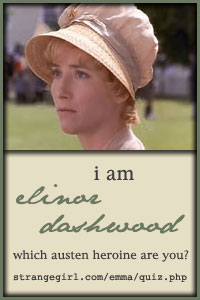Vine Lace Summer Socks Pattern
Sized to fit Women's Medium (size 8 feet)
Gauge: 8.5 sts and 9 rows to the inch in stockinette.
Supplies Needed:
Size 2.0 MM Addi Turbo(r) Circular needle (U.S. size 0) (or the size needed to achieve gauge)
Size 2.0 mm or 2.25 mm (1 U.S.) double point needles, which you will need for the heel and the toes, set of 5.
I prefer using a 12" ADDI turbo circular to knit my sock, so that's how this pattern is written. It can certainly be knit using any method you prefer. See my post about using markers instead of needles to avoid ladders and convert any pattern to your preferred method of knitting.
100 grams of Opal Cotton/Wool Blend in the Hundertwasser Positive/Negative colorway. You may also use another
2 small circular markers
Abbreviations:
CO = Cast on
K = Knit
KW = knit wise, or inserting your needle into the next stitch as if you were going to knit it
P = Purl
PSSO = Pass the slipped stitch over the stitch you just knitted (just like binding off)
PW = purl wise, or inserting your needle into the next stitch as if you were going to purl it
SL = Slip
SSK = slip a st PW to right needle, slip a second st KW to right needle, then move them back to the left needle knit those two together
TOG = together (as in K2TOG: knit two stitches together to decrease one stitch)
YO = Bring the yarn to the front of the work as if you were going to purl. Instead, bring the yarn back over the needle and knit the next stitch. This creates a hole, and a new stitch, which must be accounted for with an accompanying decrease
Sock Pattern
CO 72 sts. Join, being careful not to twist, and knit in garter stitch for 6 rounds, ending with a knit round.
Garter Stitch in the Round:
Round 1: Purl
Round 2: Knit
Repeats rounds 1 and 2 for as many rounds as you want
Vine Lace Stripe Pattern Stitch (9 stitch repeat)
Round 1: *K1, yo, k2, sl1, k1, psso, k2tog, k2, yo*; rep between *’s
Round 3: *yo, k2, sl1, k1, psso, k2tog, k2, yo, k1*; repeat between *’s
Rounds 2 & 4: Knit
Repeats rounds 1-4 for pattern
Place a marker at join. The striping pattern of most yarns should look nice for both sizes at this gauge. Knit around in the vine lace pattern stitch until sock tube measures 5-6 inches long (stretched out), ending with round 1 or 3 of the lace pattern.
NOTE: Don't worry when you first start knitting the lace pattern. The sock will flare out and look like a flower and you'll swear it will never fit anyone but Bigfoot. Not to worry, keep knitting a few repeats of the lace and the sock will calm down. The top does flop over a bit when not on the foot. I don't find this to be a problem. If it really bothers you, you can knit a few more rounds of garter stitch before beginning the lace pattern. The lace does not have a lot of widthwise stretch (think Jaywalker).
Remove marker until the heel is finished. Change to double pointed needles (or keep using two circulars or one long magic loop circular), keeping the instep stitches on the circular needle. I knit the heel on double points. Knit across the first 36 stitches. This is the first row of the heel.
Heel: Eye of Partridge with slipped stitch edge (EOP)
Row 1: *slip 1, K1,* repeat between *'s to end
Row 2: slip 1, P to end
Row 3: slip 1, K1, *k1, slip 1,* repeat between *'s to last 2 sts, end K2 (Don’t end with a slipped stitch.) This alternates the slipped stitches, creating the EOP pattern. I originally discovered (unvented) this variation when I made a mistake doing the heel sitch and liked what I created. Later on I learned that it had a name. Many patterns will have you slip two stitches at the start of round 3, then K1, SL1, but for stability I prefer to have two knit stitches in a row instead of two slipped stitches.
Row 4: repeat Row 2.
Knit in this pattern until heel flap is 2 1/4 - 2 1/2 inches long. This is a matter of personal preference. Measure the bare foot of the intended recipient from floor to middle of ankle bone to determine the correct measurement. You can also knit until the heel flap is square, as many patterns state, but with the eye of partridge stitch drawing in the heel I prefer to use an actual measurement.
Heel turn: (round heel) Thanks to Dave Mackay's "heels by number" which was the inspiration for these.
(Note: SSK = slip a st PW* to right needle, slip a second st KW* to right needle, then knit those two together)
Row 1: slip 1, knit 18, ssk, k 1, turn
Row 2: slip 1, purl 5, p2tog, p1, turn
Row 3: slip 1, knit 6, ssk, k1, turn
Row 4: slip 1, purl 7, p2tog, p 1, turn.
Continue on, adding one st knitted or purled at the center of the row until all sts have been worked. I try to keep knitting the heel turn in the EOP stitch, but it's not essential. You should be ending with a knit row. If not, knit across the heel until you reach the first pick up edge.
Using a new double point needle, pick up & knit one st from each slipped st along the edge of the heel flap (about 20). If there is a little gap where the heel meets the instep stitches, pick up a strand and twist it, then knit it to close the hole. If you have to, pick up another loose area and repeat the process. Place the first marker here. Knit across the 36 instep stitches (still waiting patiently on the circular needle holder), place second marker. This will be round 2 or 4 of the vine lace stitch (plain knit), which you didn't knit earlier. Pick up & knit stitches on the opposite side of heel flap, knit across heel flap to three stitches from first marker. You should have about 96-104 stitches on the needle at this point. It is not critical to have an exact number of stitches, as you will continue to decrease the extra stitches away until you return to the same number that you started with.
NOTE: I've recently rediscovered a great band heel which mitigates the wider heel stripes and all decrease rounds at this great site. I knit my last two pairs using this heel and it is very nice. I still use the EOP slip stitch, which means I have to add a few rows to the heel flap before decreasing. Then I have a few decrease rounds after picking up the gusset stitches. Thanks to Nan for this great pattern and tutorial, and to Nancy Bush for popularizing the band heel.
Decrease Rounds:
Three stitches from first marker, K2 TOG, K 1. Slip marker, and knit across the 36 stitch instep in the vine lace pattern to the second marker, slip it, K 1, SSK, knit around to the first marker. Around this point you will want to change back to using the circular needle. Knit one round without decreasing (or two, if you like a slower rate of decrease for a higher instep), and repeat decrease round. Repeat decrease and plain knit rounds until 72 sts remain on the needle, 36 on the instep and 36 on the foot. Knit plain, without decreasing, and keeping the instep stitches in the lace pattern and the foot stitches in stockinette, until the foot is about 7.25" long (2 to 2 1/2 inches less than desired length). .
Wedge toe:
Round 1: Knit to last 3 sts before first marker, k2 tog, k1, slip marker, K1, SSK, knit to last 3 sts before second marker, K2 TOG, K1, slip marker, K1, SSK.
Round 2: Knit around in stockinette stitch.
Change to double pointed needles again when you have too few stitches to go around the circular needle easily. Repeat these two rounds until 18 sts remain. Divide the 18 sts between 2 needles at markers and Kitchener stitch (graft) them together or do a 3-needle bind off like me.
Now knit the second sock!
Copyright 2007 Margie Dougherty
All rights reserved. You may print this pattern and share it with others, providing this notice remains attached.





















 Knitters Without Borders Challenge
Knitters Without Borders Challenge


 Knit
Knit


























5 comments:
Hi margie, thanks for stopping by my blog. I got a surprise, when I decided to check out your blog. It's one I read all the time! I love the sock pattern. that yarn is beautiful!thanks for sharing!!!
Ditto, thanks for sharing! When I get out of my sock funk I might just give them a go!
Thanks for looking. I made an important change to the pattern for the smaller size. The Vine Lace Stripe is a 9 stitch repeat, so you can't cast on 64 stitches. Sorry for the oops.
I love the sock pattern. Thank you for the good advise about my Jaywalker Sock. I check on your blog about once a month. I love your socks. You are a much faster knitter than I am.
Now thats a pretty sock! Cute blog
Post a Comment